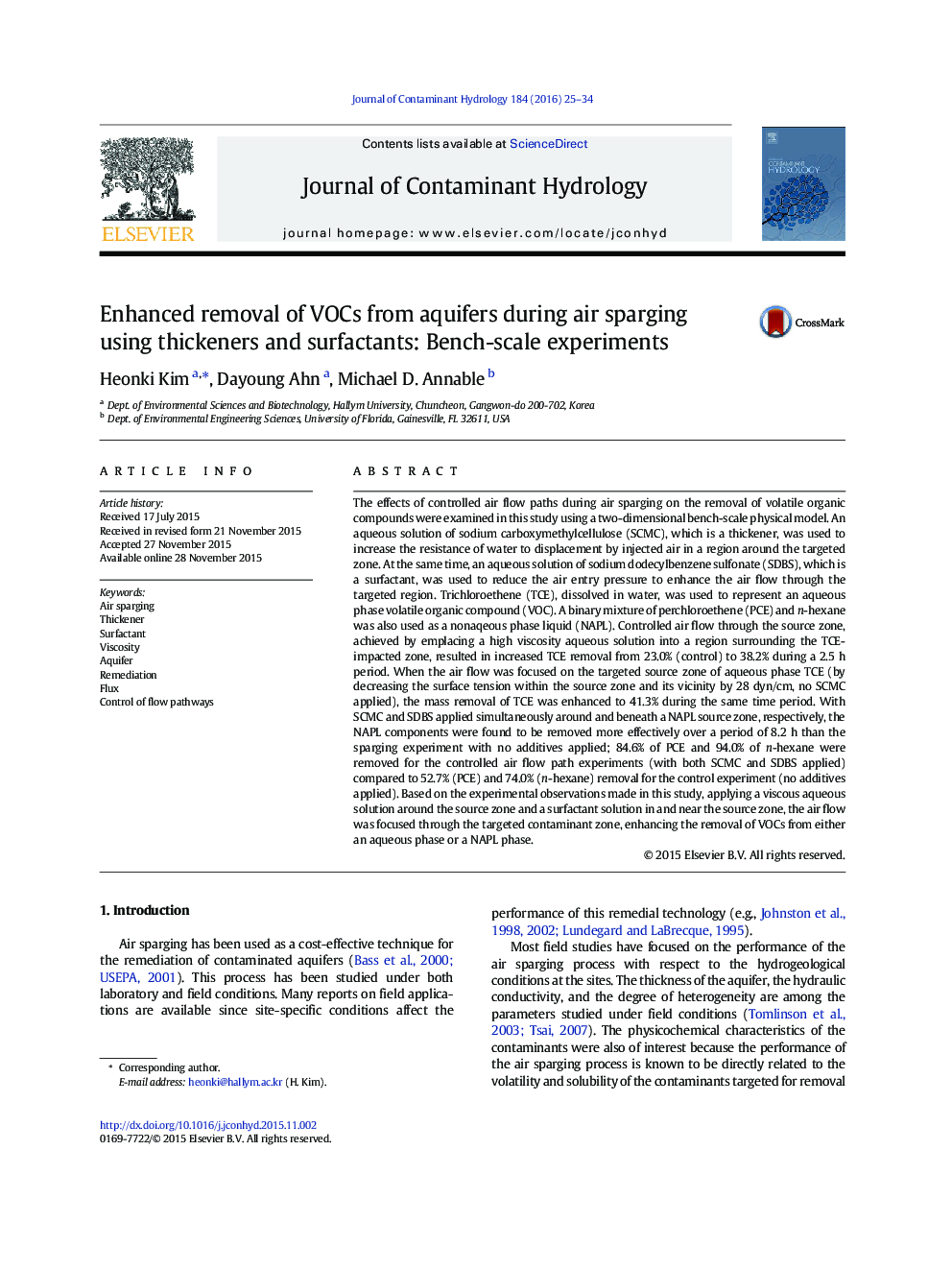| کد مقاله | کد نشریه | سال انتشار | مقاله انگلیسی | نسخه تمام متن |
|---|---|---|---|---|
| 4546416 | 1627026 | 2016 | 10 صفحه PDF | دانلود رایگان |

• Increased contaminant fluxes at the soil surface with modified physico-chemical properties of background groundwater.
• Air flow paths was controlled using thickeners and surfactant to focus injected air on the target contaminated zone.
• Increased air flux through the target zone using thickeners and surfactant enhances the contaminant removal from aquifers.
The effects of controlled air flow paths during air sparging on the removal of volatile organic compounds were examined in this study using a two-dimensional bench-scale physical model. An aqueous solution of sodium carboxymethylcellulose (SCMC), which is a thickener, was used to increase the resistance of water to displacement by injected air in a region around the targeted zone. At the same time, an aqueous solution of sodium dodecylbenzene sulfonate (SDBS), which is a surfactant, was used to reduce the air entry pressure to enhance the air flow through the targeted region. Trichloroethene (TCE), dissolved in water, was used to represent an aqueous phase volatile organic compound (VOC). A binary mixture of perchloroethene (PCE) and n-hexane was also used as a nonaqeous phase liquid (NAPL). Controlled air flow through the source zone, achieved by emplacing a high viscosity aqueous solution into a region surrounding the TCE-impacted zone, resulted in increased TCE removal from 23.0% (control) to 38.2% during a 2.5 h period. When the air flow was focused on the targeted source zone of aqueous phase TCE (by decreasing the surface tension within the source zone and its vicinity by 28 dyn/cm, no SCMC applied), the mass removal of TCE was enhanced to 41.3% during the same time period. With SCMC and SDBS applied simultaneously around and beneath a NAPL source zone, respectively, the NAPL components were found to be removed more effectively over a period of 8.2 h than the sparging experiment with no additives applied; 84.6% of PCE and 94.0% of n-hexane were removed for the controlled air flow path experiments (with both SCMC and SDBS applied) compared to 52.7% (PCE) and 74.0% (n-hexane) removal for the control experiment (no additives applied). Based on the experimental observations made in this study, applying a viscous aqueous solution around the source zone and a surfactant solution in and near the source zone, the air flow was focused through the targeted contaminant zone, enhancing the removal of VOCs from either an aqueous phase or a NAPL phase.
Figure optionsDownload as PowerPoint slide
Journal: Journal of Contaminant Hydrology - Volume 184, January 2016, Pages 25–34